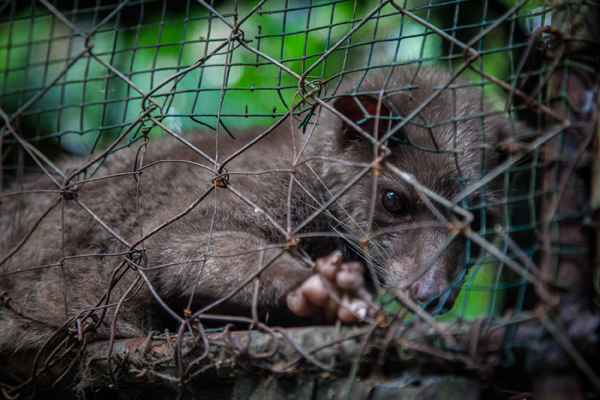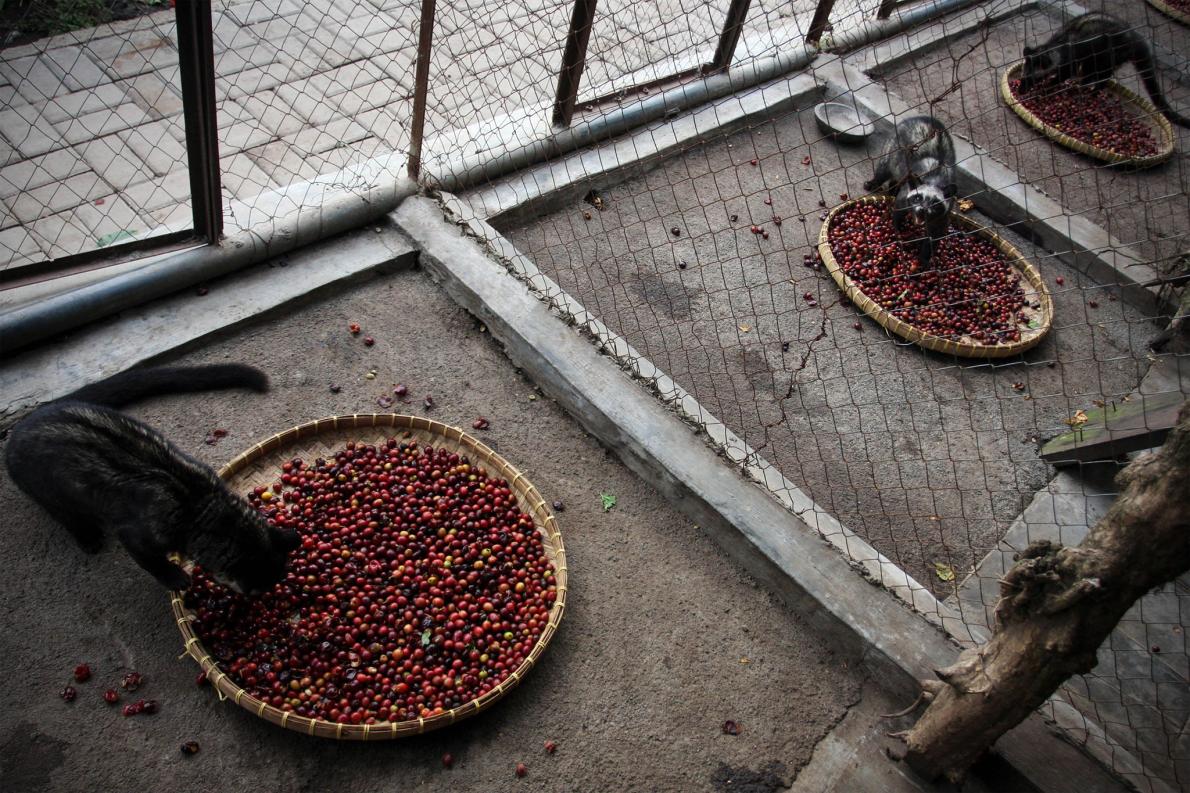The world’s most expensive coffee it is made from poop, but this is not the worse part.
You might have already heard about kopi luwak: the world’s most expensive coffee. And you might also have heard that this kind of coffee is produced from the coffee beans which have been digested by a certain Indonesian cat-like animal called civet.
Found in Southeast Asia and sub-Saharan Africa, the civet has a long tail like a monkey, face markings like a raccoon, and stripes or spots on its body. It plays an important role in the food chain, eating insects and small reptiles in addition to fruits like coffee cherries and mangoes, and being eaten in turn by leopards, large snakes, and crocodiles.
This is the reason kopi luwak is also called cat poop coffee or civet cat coffee. The feces of this cat will be collected, finished and sold as kopi luwak. The short supply, in comparison with the high demand, the different taste and the uncommon production methods define the value of kopi luwak – the most expensive coffee in the world.
In fact, a cup of kopi luwak, as it is known, can sell for as much as $90 in the United States.
But now we are going to tell you the truth about this expensive coffee. Rachael Bale, on National Geographic explains:
At first, the civet coffee trade boded well for these creatures. In Indonesia, the Asian palm civet, which raids commercial fruit farms, is often seen as a pest, so the growth in the kopi luwak industry encouraged local people to protect civets for their valuable dung. Their digestive enzymes change the structure of proteins in the coffee beans, which removes some of the acidity to make a smoother cup of coffee.
But as civet coffee has gained popularity, and with Indonesia growing as a tourist destination where visitors want to see and interact with wildlife, more wild civets are being confined to cages on coffee plantations. In part, this is for coffee production, but it’s also so money can be made from civet-ogling tourists.
Researchers from Oxford University’s Wildlife Conservation Research Unit and the London-based nonprofit World Animal Protection assessed the living conditions of nearly 50 wild civets held in cages at 16 plantations on Bali. The results, published Thursday in the journal Animal Welfare, paint a grim picture.
From the size and sanitation of the cages to the ability of their occupants to act like normal civets, every plantation the researchers visited failed basic animal welfare requirements. “Some of these cages were literally the tiniest—we would call them rabbit hutches. They’re absolutely soaked through with urine and droppings all over the place,” said Neil D’Cruze, one of the researchers.
Some of the civets were very thin, from being fed a restricted diet of only coffee cherries—the fruit that surrounds the coffee bean. Some were obese, from never being able to move around freely. And some were jacked up on caffeine, D’Cruze said.
But what he found most disturbing was the wire floor many of the animals were forced to stand, sit, and sleep on around the clock. “If you’re standing on that kind of wire mesh all the time, it’s going to cause sores and abrasions. They have nowhere to go to get off that flooring,” D’Cruze said. “It’s a constant, intense source of pain and discomfort.”
more on coffeemuseum.com





